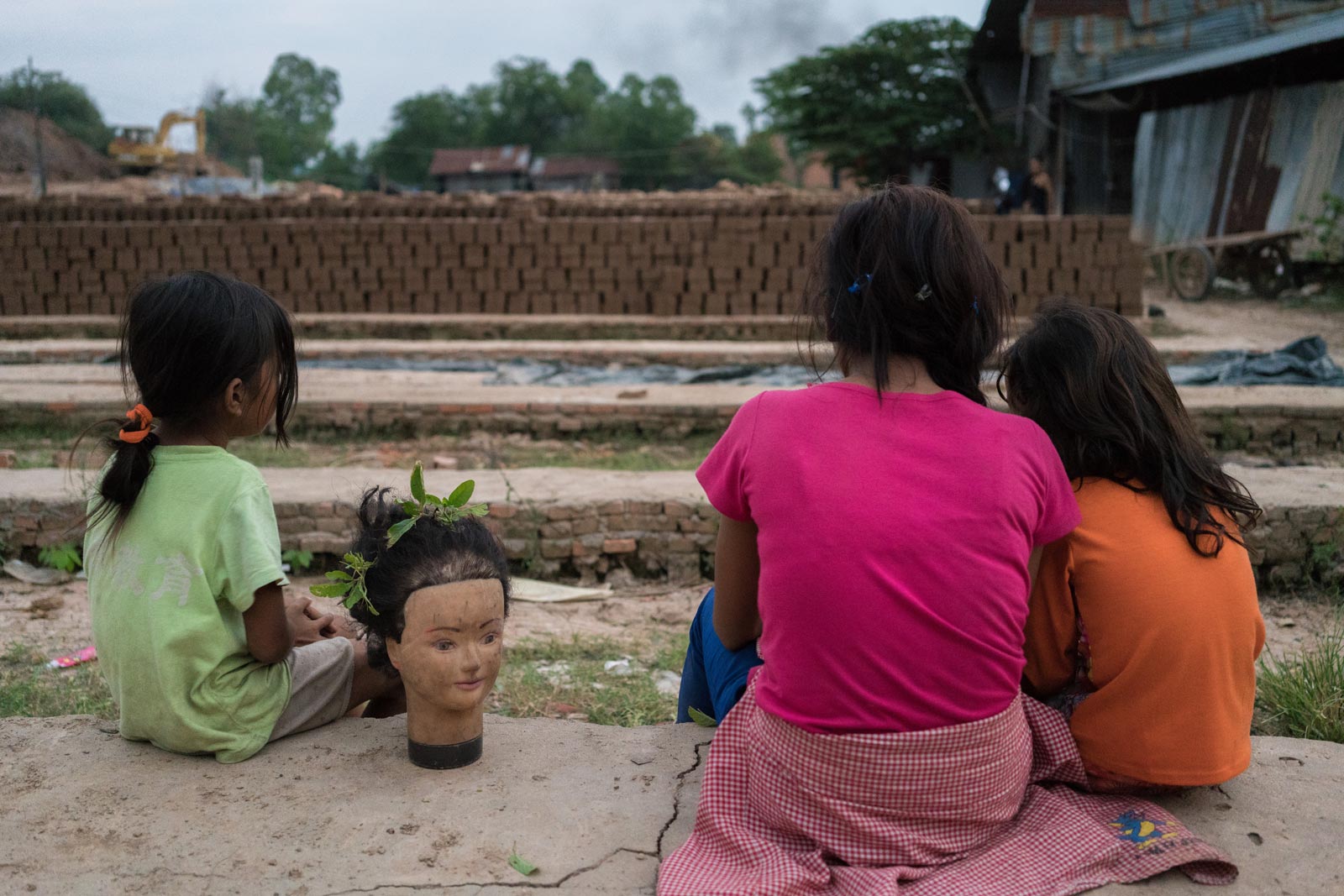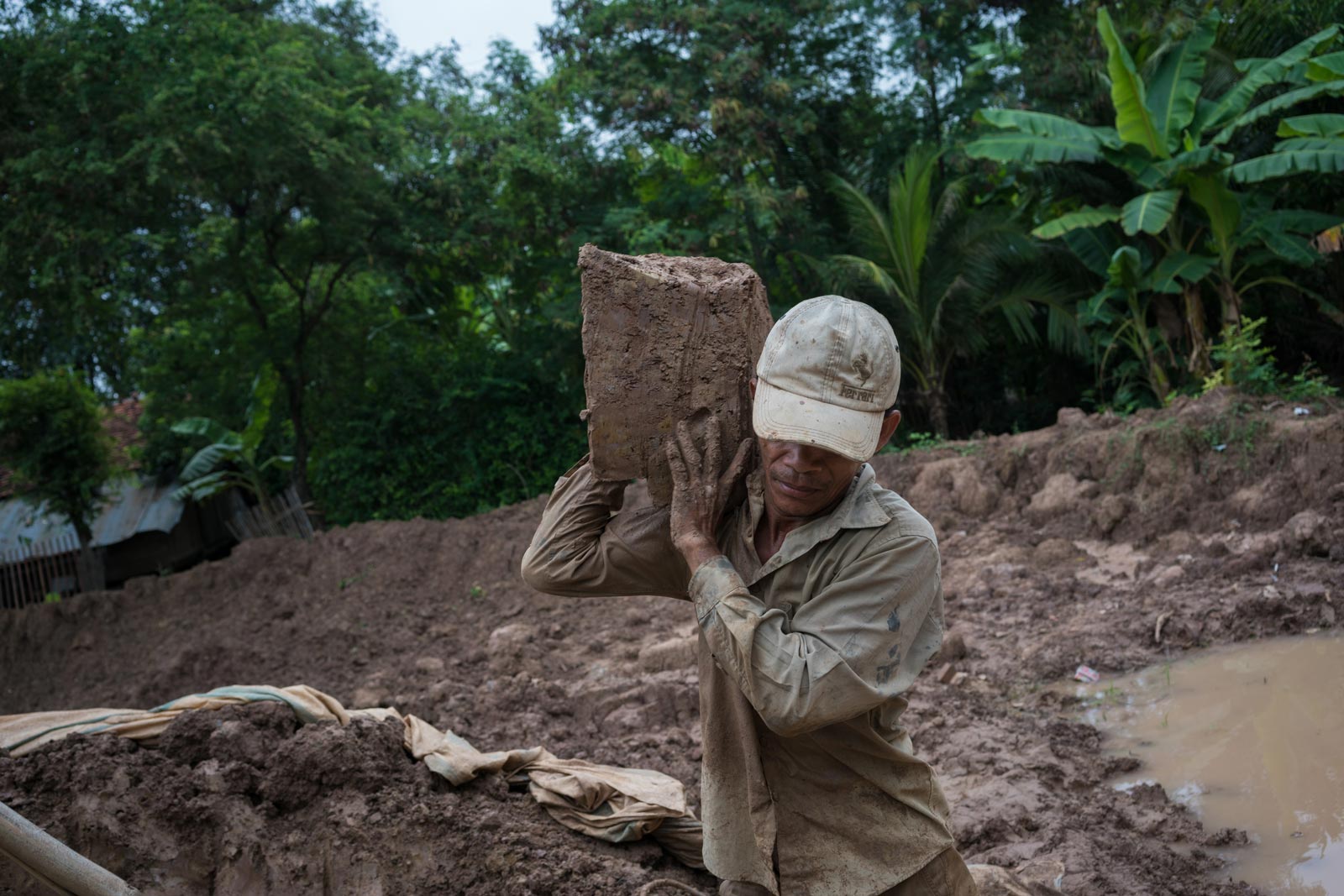Since late-2018, brick kilns have become a focal point for Cambodia’s ongoing problem with child labour, an issue that saw the Kingdom ranked 28th in the world and the highest risk country in Southeast Asia by the recently released 2020 Child Labour Index.
While a long-running problem in the Kingdom, the use of child labour in brick kilns was thrust into public consciousness when an investigation called Blood Bricks: Untold Stories of Modern Slavery and Climate Change from Cambodia – which looked into brick kilns, debt bondage and climate change – was published by Royal Holloway, University of London in October 2018.
The issue gained further traction in March last year when a 10-year-old-girl lost her arm while working in a brick kiln. Only then did the government announce an immediate ban on children on the production line, saying it would ensure this through inspections and preventative measures, as well as child-free brick kilns by 2020.
This week, to mark World Day Against Child Labour, two of Blood Brick’s authors spoke to the Globe to provide an update on the situation, explaining just how deep the rabbit warren goes with respect to Cambodia’s systematic problems with child labour in brick kilns.





“The way we understood child labour taking place in the kilns was that employed members of the family would ask their children to work,” Dr Nithya Natarajan, a lecturer in international development at King’s College London and one of the authors of Blood Bricks, told the Globe. “The debt bond to the kiln owner was very large and they were paying the families a piece rate.”
In essence, the more productive you are – the more bricks you shift or mould – the more you are paid.
“So, it would make sense in order to pay the debt off faster, you would get your whole family to help – all hands-on-deck as much as possible,” explained Dr Natarajan. “Child labour in this sense wasn’t an isolated issue, it was to do with low wages and the structure of these wages, coupled with really high levels of debt.”
Microfinance lenders and the debt placed on the borrowers is a large problem in Cambodia. The country has more than 2.6 million microfinance borrowers, with loans exceeding $10 billion, and helps to explain why families are forced into the kilns.
“A lot of families who didn’t have any particular assets, the microfinance lender would give them a loan on the land in which their house stood,” said Dr Natarajan.
Worried about the consequences of missing a payment and the subsequent seizure of their house, coupled with a lack of regulation, pushed people towards the heat of the kilns. “You had families who would choose to go and work in the kiln to avoid the asset seizure process.”
The Blood Bricks report also uncovered a link with child labour in the kilns and climate change, in which a shift in agricultural output in Cambodia to encourage large scale farming for exports encouraged risk and resulted in greater debt levels.
“Cambodia has seen an agricultural sector that has shifted from subsistence, to one of increased yields and exports – asking farmers to invest more,” said Dr Natarajan. Larger loans were taken out, often resulting in greater debt, and increased amounts of people would turn to the kilns.
“Climate change didn’t cause this [families going to the kilns], but it’s the link between climate change and what was happening in the countryside already that helped.”
Families are also prevented from leaving the kilns when there is no work, during fluctuations in demand, and cannot go and find a second job to sustain living costs. “They’re forced to increase their borrowing from the kiln owner,” said Dr Natarajan. “So, the loan then just gets bigger and bigger.”

The owners tend not to give big loans to those without their families with them … It’s more difficult to escape with a family and that’s why you see a huge number of children living in these kilns
Dr Laurie Parsons, a lecturer in human geography at Royal Holloway, was a co-investigator on Blood Bricks. He explained that while a large number of children are reportedly only living on the premises, and not working, it’s a shady issue.
“It’s very blurred as to who’s working and who isn’t,” said Dr Parsons. “A lot of the children contribute during particularly busy periods, when the whole family pulls together to help. Deciphering which of those are working and which aren’t is blurred and that speaks to the size of the issue – it’s not something you can wholly sort out.”
A Builders and Woodworkers Trade Union Association (BWTUC) survey of 464 kilns – conducted in July last year, with the results published in February – found that close to 4,000 children remain living in the kilns, over 600 of which said that they were still working on the production line.
Dr Parsons continued that it is preferable to the kiln owner that the worker’s family accompany them, especially if the worker has taken out a loan.
“The owners tend not to give big loans to those without their families with them – it [families] acts as a sort of insurance,” explained Dr Parsons. “It’s more difficult to escape with a family and that’s why you see a huge number of children living in these kilns.”
Now in mid-2020 with debt bondage and child labour an ongoing issue in Cambodia’s kilns, and efforts to stamp it out falling short – only a deep cleansing of the root causes of the issue will have a lasting effect.


“You can see now more inspections, physical restrictions and a focus on bringing about barriers between the living and working areas within the kilns,” observed Dr Parsons. “But knowing the way this issue is intermingled, I’m not sure how much impact these will have.”
A Thomson Reuters Foundation exposé released in February investigating the prevalence of underage workers in Cambodia’s brick kilns showed the ongoing presence of child labour in the country’s furnaces, even after government efforts to stamp it out.
Despite the Cambodian government declaring all kilns free of child labour after a crackdown, the Reuters investigation – which included kiln visits, interviews with the police and a comprehensive survey – revealed the continuation of the problem.
Dr Natarajan said that changing the wage structures – the way debt is repaid and how workers are paid – is the most preferable tool to try and solve the issue. “The kiln owner takes on two roles: the employer, and the lender. We’re saying: separate them,” Dr Natarajan said.
The two authors encouraged clear guidelines for debt repayment, coupled with fair wages so that children would not have to be called upon to help.
“They’ll need to be an addressing of the structural, predominantly economical, dimensions of these issues – such as, being paid a fair wage so they won’t have to get their families and children to work alongside them,” said Dr Parsons. “That is the only way we see a sustainable solution to this.”


